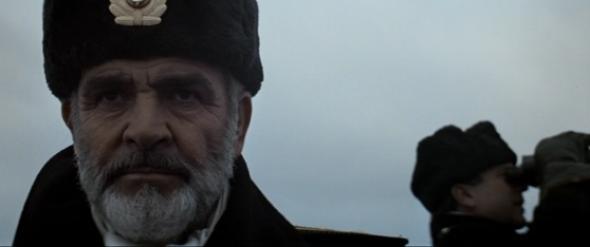Tom Clancy, who died yesterday at age 66, was renowned for the technical detail of his best-selling military thrillers. This attention to detail was present in his first published novel, The Hunt for Red October, which centers on the attempt to defect by a Soviet submarine commander named Marko Alexandrovich Ramius. (Ramius pilots an experimental nuclear submarine called the Red October.) Clancy’s book was the first work of fiction published by the Naval Institute Press, an imprint of the U.S. Naval Institute. Clancy had a relationship with the press because he had written articles for their magazine, Proceedings of the U.S. Naval Institute.
Given those origins, perhaps it’s unsurprising that the book includes remarkably fine-grained technological details about submarines. At one point in the book we learn that the Red October uses “a highly sensitive device called a gradiometer, essentially two large lead weights separated by a space of one hundred yards. A laser-computer system measured the space between the weights down to a fraction of an angstrom. Distortion of that distance or lateral movement of the weights indicated variations in the local gravitational field,” the book explains. “With careful use of gravitometers in the ship’s inertial navigation system,” Ramius “could plot the vessel’s location to within a hundred meters.”
In fact, “no Soviet vessel actually carried such elaborate gear.” But something like it was in use by the U.S. Navy. “In the 1970s, driven by both navigation and missile launching requirements, the U.S. Navy spent hundreds of millions of dollars developing a system to measure gravity gradients,” as Robin Bell explains in a 1997 article for the Leading Edge, a geoscience journal. The U.S. system “was somewhat more complex than the fictional one Clancy installed on the Red October,” Bell explains. It was also classified. Using gravimetry, “the measurement of the strength of a gravitational field,” to pilot a submarine had serious benefits for covert operations. While “using sonar involved sending off sonic ‘pings’ that would reveal your location to any submarine in the near area,” a submarine “that could navigate using a gravimeter … would be able to, in effect, ‘run silent.’ ” In a recent piece for Offshore Engineer, Andrew McBarnet says the system was “designed ostensibly for covert navigation, but most probably also for the passive detection of gravity field changes that might indicate the presence of a silent enemy submarine.” In any case, when this technology was first developed by the U.S. Navy, it was reportedly “deployed on only a few Ohio-class Trident submarines…”





